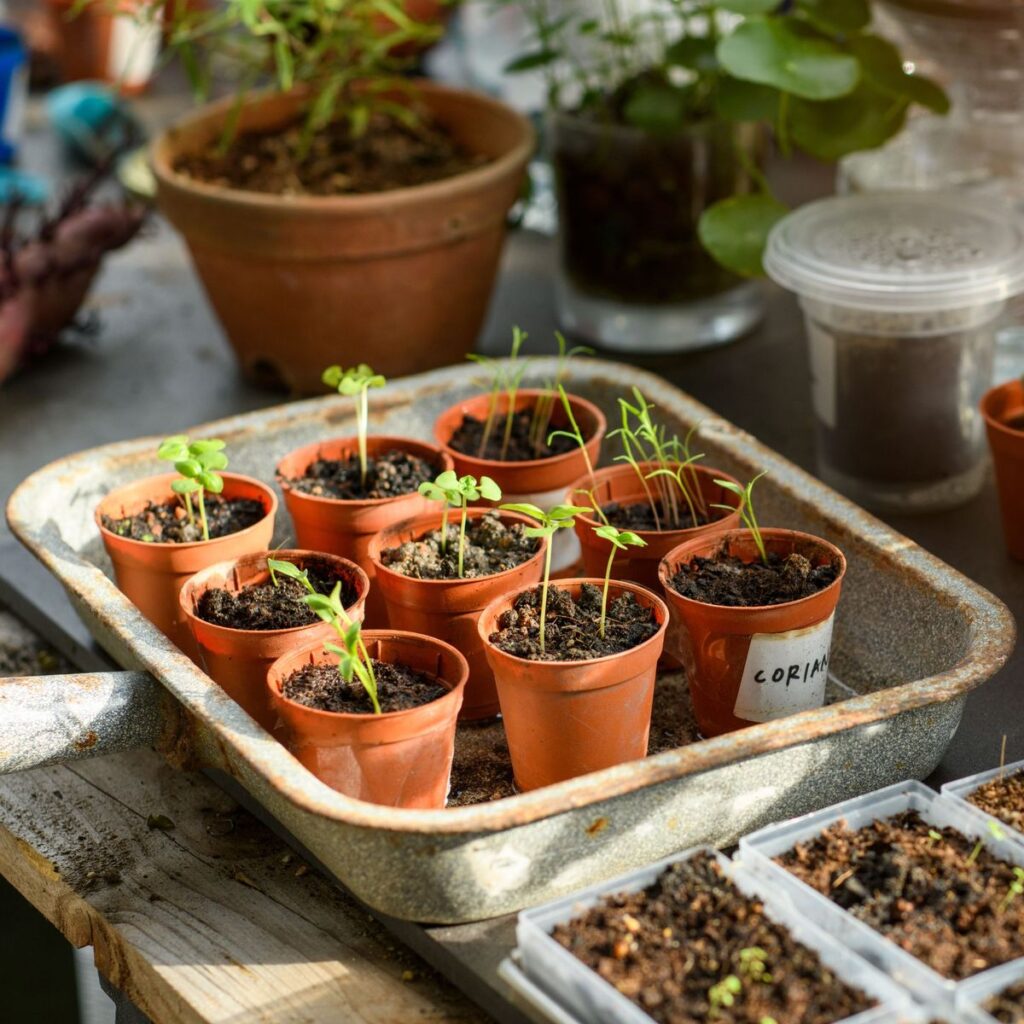There’s nothing quite as exciting as seeing your seeds sprout after days, even weeks, of waiting. But once they’re out in the world, one question often crops up: Why are my seedlings legging?
Whether you’re growing vegetables in a small garden from scratch for the first time or you’re a seasoned gardener, we’ve all wondered why our seedlings are long and spindly at some point. It doesn’t matter whether you’re growing sunflowers, tomatoes, or any plant between — seedlings can become leggy if conditions aren’t right.
‘But what conditions are those?’ we hear you ask. ‘Why are my seedlings leggy?’ We’ve spoken to plant experts to find out why it happens, and how we can avoid it.
It all comes down to one key factor: light. Well, a lack of it.
When seedlings aren’t receiving enough light during the early stages of growth, they’ll reach out to try and find it. That means your seedlings are literally stretching themselves thin in pursuit of sunlight.
‘This is common for seeds that are started indoors on windowsills, where light primarily comes from one side,’ explains Josh Novell, garden plants expert and director of Polhill Garden Centre.
‘Low light levels early in the year, combined with warm indoor temperatures, will encourage seedlings to grow tall and thin as they reach for light, creating weak stems that struggle to support the plant.’
Light levels aren’t the only culprit, though. A few other issues can cause leggy seedlings, too.
‘Some factors such as a lack of proper airflow, water or space can also contribute to seedlings becoming leggy, but it’s mainly insufficient light that causes it,’ says Morris Hankinson, founder of Hopes Grove Nurseries.
A lack of space can increase the risk of legging seedlings because when they’re crammed closely together, they’re more likely to stretch out to compete for light.
And as Morris mentioned, watering mistakes can easily lead to leggy seedlings, too. ‘Without sufficient water, they will grow slowly and weakly, looking limp and unhealthy,’ Josh adds.
Can you fix leggy seedlings?
Before you take pity on your seedlings, know that they can be saved — or, at the very least, prevention is better than cure.
What you’ll need
1. Prevention
Usually, it’s safer to prevent your seedlings from becoming leggy in the first place, and you can do that by making sure they’re growing in the right conditions.
‘Where possible, always ensure there’s enough light, water and airflow before planting,’ advises Morris.
Some grow lights can be a huge help if you’re struggling to find enough natural daylight for your plants during the winter months.
2. Transplanting
If it’s too late and your seedlings are already looking spindly, there is one method that might improve things.
‘You can try to fix them by transplanting them,’ Morris says. Just check whether you should transplant them when the soil is wet or dry.
The key is to bury the correct amount of stem beneath the soil. ‘Replant seedlings by burying part of the elongated stem beneath the soil, leaving only the healthy upper portion exposed,’ explains Josh.
‘This encourages the plant to develop roots along the buried stem, helping the seedling grow strongly.’
3. Exposure to airflow
Some garden experts suggest exposing your seedlings to airflow to toughen them up a little.
‘Airflow exposure, such as that from a fan, can encourage seedlings to develop stronger and thicker stems as they sway slightly in the breeze,’ explains Graham Smith MCIHort, gardening expert at LBS Horticulture.
‘This movement will mimic what they would usually be exposed to in their natural environment, which can help to make them more robust and less leggy.’
FAQs
Can you make seedling stems thicker?
As gardening expert Graham mentioned, exposing your seedlings to airflow can toughen up the stems.
‘You can make seedling stems thicker and more robust by exposing them to increased airflow, such as by using a fan to blow air on them,’ he explains. ‘As the seedlings sway in the breeze created, they will develop thicker stems to help protect themselves from being damaged.’
If you haven’t sown anything yet, take a look at our round-up of what you can plant in February and get started…
Read the full article here
